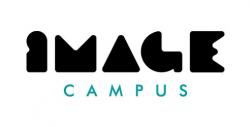
What Does a Concept Artist Do? Where Do Concept Artist Work? ACR Takes a Look.
| College | City | State |
|---|---|---|
| Arizona State University | Tempe | Arizona |
| California Baptist University | Riverside | California |
| California State University Fullerton | Fullerton | California |
| Columbia College Chicago | Chicago | Illinois |
| George Washington University | Washington | DC |
| Indiana University South Bend | South Bend | Indiana |
| Minneapolis College of Design | Minneapolis | Minnesota |
| Montclair State University | Montclair | New Jersey |
| Pace University | New York | New York |
| Rochester Institute of Technology | Rochester | New York |
| Savannah College of Art and Design | Savannah | Georgia |
| University of Georgia | Athens | Georgia |
| University of North Texas | Denton | Texas |
| University of Southern California | Los Angeles | California |
| University of Wisconsin-Milwaukee | Milwaukee | Wisconsin |
| Western Washington University | Bellingham | Washington |
| Westfield State University | Westfield | Massachusetts |
| University of Iowa | Iowa City | Iowa |
| University of Miami | Coral Gables | Florida |
| University of Utah | Salt Lake City | Utah |
What Does a Concept Artist Do?
Concept artists, also called “conceptual artists," create visual images of ideas for use in areas such as animation, comic book illustration, gaming, advertising, print, and many others. Concept artists work with other art departments to ensure that the right visual style is reflected in each part of the project.
Concept artists have a unique skill set. They have mastered the art of using paint, pencils, software programs, or whatever it takes to draw weapons, vehicles, environments, graphics, or the characters needed for any given project.
Where Do Concept Artists Work?
Concept artists work in animation studios, film and video production companies, gaming companies, advertising agencies, graphic design firms, print publications, web design firms, interior design or decorating firms, and even architecture firms.
What is the Job Outlook for Concept Artists?
Concept artists are an essential part of the creative and production process. As such, they are a valuable asset to companies, big and small, who are always on the lookout for artists who display exceptional style, talent, and creativity. Artists that have developed a “mastery of artistic techniques and skills” will have the best job prospects as well as software-savvy concept artists thanks to a high demand for more detailed images and backgrounds.
The Bureau of Labor Statistics (BLS) reports employment for fine artists as a single group. This includes illustrators, painters, and sculptors. Employment for this group is expected to grow 6% for the 2016-2026 decade, which is as fast as average for all occupations. This will add 3,100 positions to the current (salaried) workforce of around 53,400 artists. Concept artists working in the animation industry will enjoy employment growth thanks to increased demand for animation and visual effects in video games, movies, and television.
The BLS reports that consumers will continue to demand more realistic video games, movie and television special effects, and three-dimensional movies. This will create demand for newer computer hardware, which will enhance the complexity of animation and visual effects. Additional concept artists and animators will be required to meet this increased demand. Job growth in other industries for concept artists is as follows:
- Software Development (games), 24%, much faster than average for all occupations
- Web Development, 15%, much faster than average for all occupations
- Film and Video, 13%, faster than average for all occupations for the 2016-2026 decade
- Advertising, 10%, faster than average for all occupations
- Animation, 8%, fast as average for all occupations
- Graphic Design, 4%, slower than average for all occupations
- Interior Design, 4%, slower than average for all occupations
- Architecture, 4%, slower than average for all occupations
Other Schools to Consider:
- Winter Park, FL & Online
- Top 50 Nationally for Animation (#14) - 2024
- Top 50 Nationally for Game Design (#12) - 2024
- Top 50 Nationally for Graphic Design (#36) - 2024
- Online
- Top 50 Private Graphic Design Schools in the US (#46) - 2024
- Buenos Aires, Argentina & Online
- Desarrollo de Videojuegos (Tecnicaturas Superiores)
- Producción y Game Design (Tecnicaturas Superiores)
- Arte y Animación para Videojuegos (Tecnicaturas Superiores)
- Producción y Animación 3D (Tecnicaturas Superiores)
- Realización Integral de Dibujos Animados (Tecnicaturas Superiores)
- Tecnicatura Superior en Animación 3D para Videojuegos (Tecnicaturas Superiores) - NUEVA - ONLINE
- Programación de Videojuegos con Unreal, Unity y Godot (Tecnicaturas Superiores) - NUEVA - ONLINE
- Unreal Connectors (Programas Profesionales - 100% Online en Vivo)
- Virtual Production (Programas Profesionales - 100% Online en Vivo)
- Introducción a Unreal Engine (Programas Profesionales - 100% Online en Vivo)
- Diseño de Interacción 3D en Realidad Virtual con Unreal Engine (Programas Profesionales - 100% Online en Vivo)
- Realidad Aumentada con Unity (Programas Profesionales - 100% Online en Vivo)
- Realidad Virtual para Arquitectura (Programas Profesionales - 100% Online en Vivo)
- Audio Inmersivo (Programas Profesionales - 100% Online en Vivo)
- Animación Profesional 3D (Programas Profesionales - 100% Online en Vivo)
- Modelado Profesional 3D (Programas Profesionales - 100% Online en Vivo)
- Visualización Arquitectónica (Programas Profesionales - 100% Online en Vivo)
- Motion Graphics (Programas Profesionales - 100% Online en Vivo)
- VFX (Programas Profesionales - 100% Online en Vivo)
- Environments para Videojuegos con Unreal Engine (Programas Profesionales - 100% Online en Vivo)
- Desarrollo de Videojuegos con Unity (Programas Profesionales - 100% Online en Vivo)
- Game Design (Programas Profesionales - 100% Online en Vivo)
- Concept Art (Programas Profesionales - 100% Online en Vivo)
- Game Art (Programas Profesionales - 100% Online en Vivo)
- Game Audio (Programas Profesionales - 100% Online en Vivo)
- Game Quality Analyst (Programas Profesionales - 100% Online en Vivo)
- Top 25 International Animation Schools - 2024 (#23)
- Online
- Top 25 International Animation Training Programs (#18) - 2024
- Online
- Online Bachelor of Science in User Experience
- Online Master of Science in User Experience
- Online Bachelor of Science in Design in Graphic Design
- Online Bachelor of Science in Graphic Information Technology – Full-Stack Web Development
- Online Bachelor of Science in Graphic Information Technology – User Experience
How Much Do Concept Artists Make?
The median annual wage for fine artists is $48,960. The lowest 10% earn less than $22,020, and the highest 10% earn more than $101,400. For color key artists working in the animation industry, note that multimedia artists and animators average $72,520. The lowest 10% earn less than $40,870, and the highest 10% earn more than $124,310. Concept artists working in the animation industry can expect their salaries to fall somewhere salaries for between fine artists and animators.
In addition to industry, salaries for fine artists such as concept artists will vary based on geographic location, type and size of company, and many other factors. For example, the highest paying states for fine artists are:
- Connecticut - $80,010
- California - $76,230
- Oklahoma - $65,140
- New Jersey - $62,840
- Arizona - $62,200
Some of the lowest paying states are Arkansas ($24,510), South Carolina ($28,070), Montana ($31,150), New Mexico ($35,110), and Missouri ($39,430).
The top paying industries for fine artists are:
- Computer Systems Design and Related Services - $88,100
- Architectural, Engineering, and Related Services - $86,700
- Aerospace Product and Parts Manufacturing - $81,630
- Motion Picture and Video Industries - $80,320
- and Related Services - $72,250
Salaries for the top five industries with the highest levels of employment for fine artists are:
- Independent Artists, Writers, and Performers - $52,200
- Motion Picture and Video Industries – 80,320
- Other Miscellaneous Store Retailers - $46,780
- Colleges, Universities, and Professional Schools - $57,890
- Newspaper, Periodical, Book, and Directory Publishers - Not Reported
How Do I Become a Concept Artist?
While talent and passion can go a long way, many top employers prefer candidates with a degree in fine art, illustration, drawing, painting, animation, or other related field. An associate degree may help get your foot in the door, but for higher-level positions, a bachelor’s degree from an accredited school will likely be the minimum requirement. Candidates with a master’s degree are attractive to potential employers as well.
No matter which degree program you choose, there are a number of essential courses to take such as drawing, painting, illustration, anatomy, computer graphics, and photography. Be sure to check the curriculum of your intended program and confirm that the school is accredited by an agency recognized by the U.S. Department of Education.
In addition to a degree, most employers prefer candidates with at least three years’ experience in the industry. Students should consider interning during their college years and/or working part-time in the industry in a support position or whatever comes your way. This experience in the industry will be invaluable once you have completed your program and are ready to enter the workforce.
Which Schools Offer Programs for Concept Artists?
- California Baptist University, BA, Minor Illustration
- California State University Fullerton, BFA Art, Drawing and Painting
- Columbia College Chicago, BA, BFA Illustration (drawing, painting, cartooning, typography, digital illustration, figure drawing)
- Corcoran School of the Arts & Design at George Washington University, BA, BFA, Dual Degree, Minor Fine Art
- Herberger Institute for Design and the Arts at Arizona State University, BFA Art, Concentrations in Drawing, Painting, MFA Art, Minor Studio Art
- Indiana University South Bend, BFA Drawing and Painting
- Lamar Dodd School of Art at University of Georgia, BFA Drawing and Painting
- Minneapolis College of Design (MCAD), BFA Drawing and Painting
- Montclair State University, BFA Animation/Illustration
- Pace University, BA Art with Digital Media, (Animation, Illustration, Graphic Design, Web Design, 3D Design)
- Peck School of Arts at University of Wisconsin-Milwaukee, BA Studio, BFA Painting & Drawing, Minor Studio
- Rochester Institute of Technology (RIT), MFA Fine Arts Studio
- Savannah College of Art and Design (SCAD), BA, BFA, MA, MFA Illustration with a Minor in Illustration for Entertainment or Animated Illustration and Publication Design; BA, BFA, MA, MFA Sequential Art
- University of North Texas, BFA, MFA Drawing and Painting
- University of Southern California, BFA Studio (with 24 units of Fine Arts electives)
- Western Washington University, BFA Drawing and Painting
- Westfield State University, BA Illustration
- University of Iowa, MFA Painting and Drawing
- University of Miami, BFA Art, BA Studio (drawing, painting, sculpture, printmaking, graphic design/multimedia, photography/digital imaging, ceramics/glass)
- University of Utah, BFA, MFA, Painting & Drawing, Drawing Minor
Awesome Animation Fact: Speaking of images, according to Computer Science for Fun (published by Queen Mary, University of London), some frames of a typical Pixar film are so complex it can take up to ninety hours for a single computer to translate all the information held in them to a finished image.




